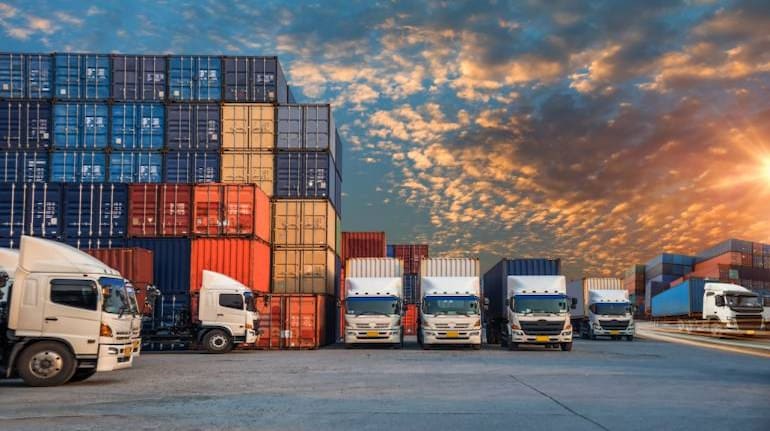



Prime Minister Narendra Modi launched the National Logistics Policy (NLP) on September 17. The policy aims to speed up last-mile delivery, end transport-related challenges, save manufacturers’ time and money, and prevent wastage of agro-products.
The Prime Minister said that the policy alone would not achieve anything, and that performance of the key ministries was key to the success of the NLP.
The key challenges the policy faces
Enabling cargo movement through the railways
One of the biggest challenges the country faces in reducing logistics costs is pivoting from its heavy reliance on road transport.
"Nearly 65 percent of India's cargo movement is by road, where fuel costs are very high. Moving cargo away from the roads to alternative forms of transport will be vital to bringing down logistics costs," the Indian head of an international logistics firm said.
He added that in countries that handle as much cargo as India, most of the cargo is moved through high-speed rail networks that are much cheaper and faster than roadways.
Vinayak Chatterjee, founder and managing trustee, of The Infravision Foundation, said that one of the biggest challenges is that the railways do not offer door-to-door delivery.

"Door-to-door delivery is possible right now by truck. For instance, a cement manufacturer can send a truck to a dealer with minimum loss in the handling of cement bags. The railways need to perfect their multimodal system (railways, connected to trucks terminals and ports) for handling commodities, as well as parcels," Chatterjee said.
Similarly, Akhileshwar Sahay, President, Advisory Services, at consulting firm BARSYL, said that the rail sector suffers from many structural deficiencies which have to be eliminated fast if logistics costs have to drop to global benchmarks.
"The average speed of a freight train has stagnated at 25 kmph for decades — it has to be urgently doubled to 50 kmph at least," Sahay said.
He added that the Indian railways need to have a time-table-based goods operation. It has to become an aggregator at the source of freight, and a disaggregator at the destination, to capture the high-value small-load business (as against rake-load goods).
Furthermore, in order to increase the railways’ cargo handling capacity, the railways needs to virtually double its fleet of wagons.
"The railways must come out with a tender so that delivery of wagons can begin by 2025, and the cargo handling capacity can rise," Puneet Kamboj, Research Assistant, Brookings India, said.
Doubling the fleet from 3.1 lakh wagons to about 6 lakh wagons is not expected to be an easy task.
Warehouse / storage facilities
The lack of proper logistics infrastructure like warehousing and cold chains is a major challenge.
"India wants to be an exporter of fruits, vegetables, and flowers. Our cold chain from the farm to the port or airport is imperfect," Chatterjee said.
The head of a large Indian logistics firm said that the lack of warehouses and cold storage facilities came into sharp relief during the COVID pandemic, when hospitals ran out of medicines due to logistical bottlenecks.
"Most hospitals did not have temperature-controlled facilities for storing oxygen cylinders and medicines. Most cities did not have cold storages for vaccines either," he added.
According to the National Agricultural Cooperative Marketing Federation (NAFED), 40 percent of the food grain produced, costing Rs 88,800 crore, goes waste every year due to a lack of storage facilities.
"Most of this wastage is due to deterioration in the quality of foodgrain during transport and storage," a senior executive from NAFED said.
He added that India will need to setup up storage facilities of 550,000 tonnes each in five major states in order to halve food wastage.
Single-window clearance
Creation of a unified logistics interface platform and the adoption of digital infrastructure in the logistics space is another big challenge.
"The integration of various e-platforms will be a challenge; there are many e-platforms and all of them need to be integrated seamlessly into one platform, which will be a huge task," Chatterjee said.
However, he said that the adoption of digital infrastructure in logistics will be quick.
"We have almost moved to digital in toll plazas; FastTag now has 95 percent penetration. You could have argued five years ago that it was a very fragmented market. We have on-boarded the entire goods sector onto e-way bills. It is important to begin the digital journey, for it is not insurmountable. Once a platform is created, people jump on to it," he said.
Similarly, Raaho Co-Founder and CEO Mohammed Imthiaz is also betting big on the digitisation of the logistics space.
“It is estimated that around 20 million trips are made by trucks every month to transport goods across the country. Less than 10,000 of these are organised digitally,” Imthiaz said.
Imthiaz said that the adoption of digital platforms in logistics is quick and happens through word of mouth.
Finally, the creation of a safe and secure database to store sensitive information is critical.
"India has had a history of cyber attacks from neighbouring countries. In order to create a safe and secure platform, the government will need to invest substantial time — around two-three years — and expertise," a cyber security expert from Deloitte said.
Discover the latest Business News, Sensex, and Nifty updates. Obtain Personal Finance insights, tax queries, and expert opinions on Moneycontrol or download the Moneycontrol App to stay updated!
Find the best of Al News in one place, specially curated for you every weekend.
Stay on top of the latest tech trends and biggest startup news.